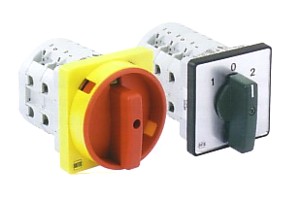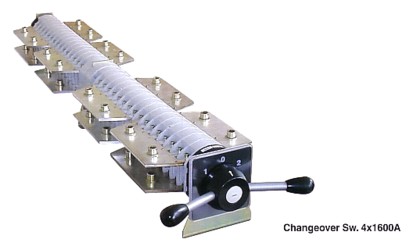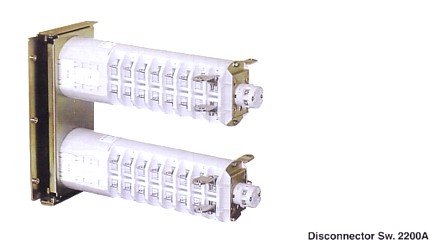
On-off switch
Two-position switches used to connect and disconnect any electrical supply. They are used in a variety of power switchig applications like manual control of direct on-line motors and isolation of motor branch circuits.
Changeover switch
Three-position switches used in power applications to change between alternate electrical supplies. Changeover switches are typically used to switch the power supply from the primary source to a stand-by generator or emergency supply in the event of a power outage.
Step switch
Multi-position switches used to connect a variety of loads to an electrical supply in a predeterminated logical sequence. A typical application would be temperature control of a heating oven or furnace.
Reversing switch
Three-position (Forward, Off, Reverse) switches used to manually control the direction of rotation of a motor. Operating the switch changes the wiring configutation to the motor to operate in the forward or reverse direction.
Dahlander switch
Three-position (1st speed, off, 2nd speed) switches
used to select 2 different speeds of rotation of a motor. Operating the switch
changes the wiring configutation and the number of poles of the motor (i.e.
4/2, 8/4, etc.)
The second speed is always two times the first one.
Star Delta switch (Wye-Delta)
Three-position (Off, Wye, Delta) switches used to manually control the reduced voltage starting of a motor. Operating the switch changes the wiring configutation to the motor from a star configuration to a delta configuration once the person operating the controller determines the motor is up to speed.
Ammeter switch
Multi-position switches used to connect one or more phases of the electrical supply to an ammeter, so that the current in each phase can be displayed on the ammeter.
Voltmeter switch
Multi-position switches used to connect two lines of the electrical supply system to a voltmeter, so that the voltage between lines (phase-to-phase or phase-to-neutral) can be displayed on the voltmeter.
 |
 |